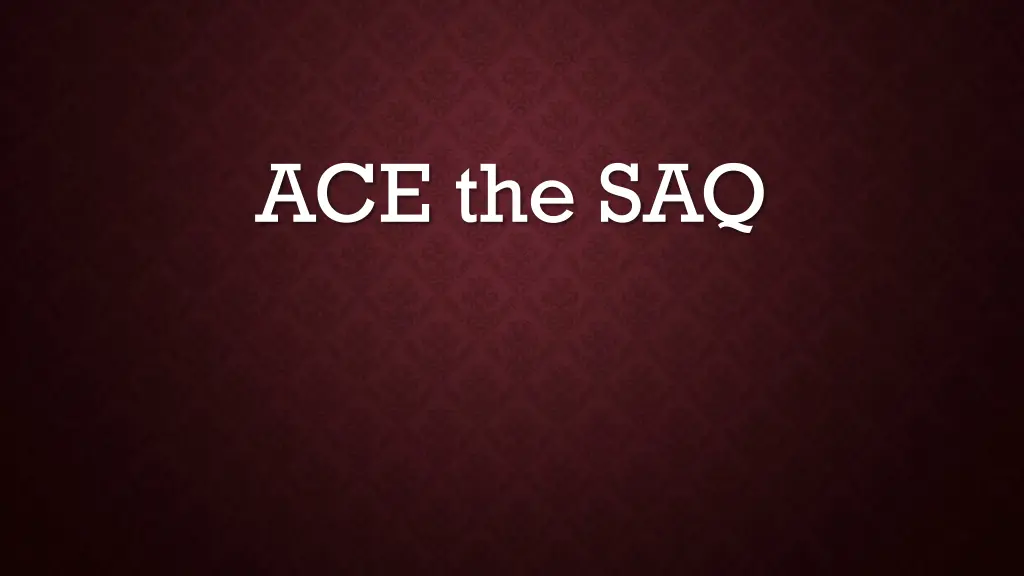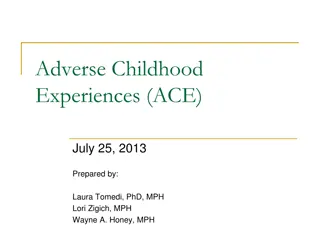
Effective Strategies for SAQ Success
Learn how to ACE the SAQ (Answer, Cite, Expand) to effectively tackle historical prompts. Practice examples from the 1850s and 1920s are provided, preparing you to analyze and respond competently. Enhance your historical reasoning skills for optimal SAQ performance.
Download Presentation

Please find below an Image/Link to download the presentation.
The content on the website is provided AS IS for your information and personal use only. It may not be sold, licensed, or shared on other websites without obtaining consent from the author. If you encounter any issues during the download, it is possible that the publisher has removed the file from their server.
You are allowed to download the files provided on this website for personal or commercial use, subject to the condition that they are used lawfully. All files are the property of their respective owners.
The content on the website is provided AS IS for your information and personal use only. It may not be sold, licensed, or shared on other websites without obtaining consent from the author.
E N D
Presentation Transcript
HOW TO ACE THE SAQ ACE it A - Answer C Cite E Expand A = Answer. You directly answer the question by identifying your claim. C = Cite. You briefly define/describe your claim. E = Expand. You connect your claim through historical context.
EXAMPLE Prompt (i.e. Part A): Briefly explain ONE important political response to the sectional conflict over slavery during the 1850 s. ANSWER: The Kansas Nebraska Act in 1854 was another attempt to settle the sectional conflict over slavery during the 1850 s. CITE: The act split the Nebraska Territory into two new territories, Nebraska and Kansas, and allowed each territory to determine free state or slave state through popular sovereignty. EXPAND: Although the Kansas Nebraska Act attempted to settle the conflict over slavery through a more democratic means, it consequently allowed slavery to expand beyond the Missouri Compromise line of 36 30 and was considered a political victory for slave power.
PRACTICE ACE IT!! A) Briefly explain ONE example of how religion and science were a source of conflict in the American society during the 1920 s. B)Briefly explain ONE development during the 1920 s that changed attitudes toward Prohibition. C) Briefly explain ONE important difference in the immigrant legislation of the 1920s in comparison to earlier periods.
PRACTICE MODIFIED ACE IT ACE it! Answer the following SAQ using the ACE technique. For Questions that ask you to pick two and than explain, you should AC the first two terms for parts A&B and E the last part for C. Prompt: A-B. Briefly explain how TWO of the following fulfilled long standing goals of Federalists. Jay s Treaty General Clause Necessary and Proper ie: Loose Whiskey Rebellion Louisiana Purchase C. Briefly explain how ONE of the above either reflected George Washington s goals.
PRACTICE MODIFIED ACE IT ACE it! Answer the following SAQ using the ACE technique. For Questions that ask you to pick two and than explain, you should AC the first two terms for parts A&B and E the last part for C. Prompt: A-B. Briefly explain how TWO of the following reforms from the Wilson administration fulfilled long standing goals of reformers. Underwood Tariff Federal Reserve Act Clayton Antitrust Act Federal Trade Commission C. Briefly explain how ONE of the above either reflected or violated Wilson s campaign policy of New Freedom.






















